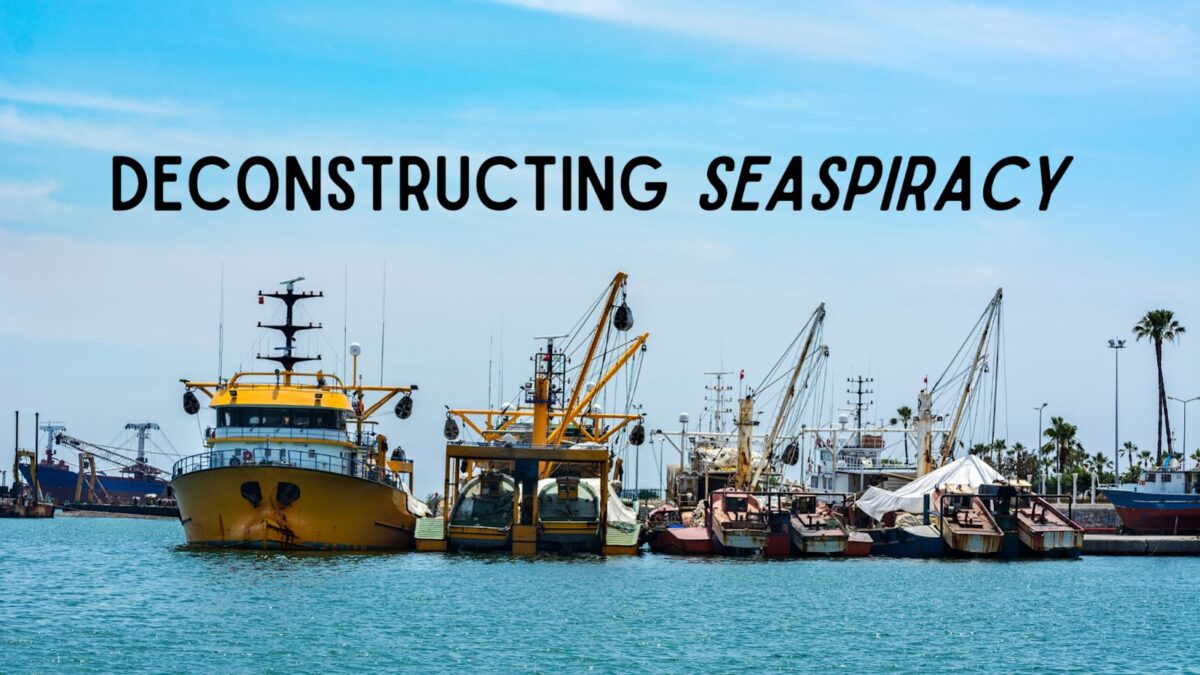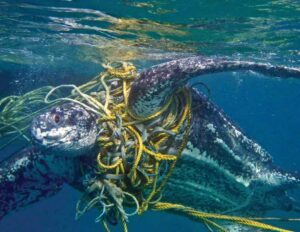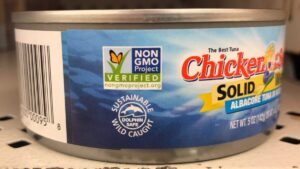 The recent Netflix documentary, Seaspiracy (2021), has taken the world by storm, bringing attention to commercial fishing’s harmful practices.
The recent Netflix documentary, Seaspiracy (2021), has taken the world by storm, bringing attention to commercial fishing’s harmful practices.
Seaspiracy has been called “controversial” for naming agencies and organizations that take advantage of and harm our ocean’s ecosystems through commercial fishing. Ali Tabrizi, the documentary director, and filmmaker takes the viewer through a journey of the ocean’s deepest, darkest, and most harmful secrets that are often hidden from the public. The documentary’s message shows the importance of veganism and the recovery and renewal of our ocean’s wildlife.
The Ecological Harm of the Commercial Fishing Industry
The documentary begins with a very current phenomenon, which is plastic in the ocean. The recent awareness of whales and other marine species washing ashore dead with plastic in their stomach or gills is not new. Tabrizi makes the point that, while plastic is harmful to our oceans in numerous ways, we have a larger and more pressing issue to confront before we thoroughly clean our oceans.
Tabrizi brings attention to each species being hunted and consumed on mass levels through the commercial fishing industry and how this is damaging to the ocean’s delicate ecosystem. Beginning with whales, their importance to our Earth and the ocean is astounding. For example, the phytoplankton (small marine algae) that they release absorbs four times the amount of carbon dioxide than the Amazon rainforest.
Tabrizi travels internationally to visit each marine danger zone and document it to visualize what is going on. He begins in Taiji, where dolphins are being hunted in large quantities because the local fisherman of this area believe that the dolphins are the cause for the fish populations are decreasing.
This is related to Tabrizi’s next observation: the commercial fishing industry’s overfishing is leading our world into a vital crisis. Bluefish Tuna, one of our world’s most-prized fish, is being driven into extinction, with less than 3% of their species still alive.
Tabrizi transitions from one endangered species to the next, taking a look at the shark finning industry and the dangers of bycatching. Bycatching happens as a result of commercial fishing, and it is where fish or other marine species (such as sharks, turtles, seals, and seabirds) are accidentally caught and killed during the process.

(Property of seaturtlestatus.org)
An average of 50 million sharks are caught this way per year, and an average of 11,000-30,000 sharks are killed each day by humans, opposed to the 10 humans who fatally die from a shark attack each year. Without sharks, the global food chain of our oceans will be forever changed for the worse.
The Effects of Bycatching
The shark finning industry takes place primarily in Asia, yet people worldwide eat fish and buy into the fishing industry, which leads to more bycatching.
Tabrizi shows the fishing industry’s money-making nature and the companies who support and back the commercial fishing industry and its methods discreetly. For example, The Marine Stewardship Council (MSC) prides themselves on their eco-friendly, sustainable fishing practices, while supporting and being funded by governments worldwide to endanger fish populations. (Tap this link to see MSC’s response to the Seaspiracy documentary)

Dolphin safe labels on tuna cans are often hard to find or false. They praise their products for being dolphin-safe yet can never guarantee that dolphins were not killed in catching the fish.
Not only are the fishing practices of commercial fishing harmful, but the materials being used (such as fishing nets and rope) are harming our oceans by being littered and left in the water.
Seaspiracy brings attention to fishing nets and marine debris in the Great Pacific Garbage Patch by showing that fishing nets in our ocean could stretch around the Earth nearly 500 times. (Check out our blog on the Great Pacific Garbage Patch for more information)
Trawling, which is pulling large nets through the water to catch fish, is the most destructive commercial fishing effect and destroys our ocean floors. The nets that perform trawling are so large that you could fit nearly 13 airline planes or an entire cathedral in them. There are weights put onto the nets that scar our seafloor as it is pulled along, destroying and damaging entire ecosystems on the ocean floor.
Biggest Takeaways:
- Commercial Fishing Endangers Marine Life through Bycatching
- Trawling has Scarred Over Four Billion Acres of Ocean Floor
- Dolphin Safe Labels are Misleading
- The Ocean Population is Harmed, Polluted, and Littered by the Fishing Industry
Seaspiracy has left us all wondering about what is really true and happening with our world’s commercial fishing industry. We encourage all of our readers to do their own research and to bolster their own opinions about this matter. Continue to make a difference every day with even the smallest of actions to help save our ocean
You can help by keeping our ocean cleaner, creating a diet that is conscious of commercial fishing’s harmful effects, and supporting or volunteering with an ocean conservancy organization!
Pledge to bring your own reusable container to pack leftovers and start making a difference today!
Follow us on social to stay up to date on our movement!
Written by Daniel Macura
